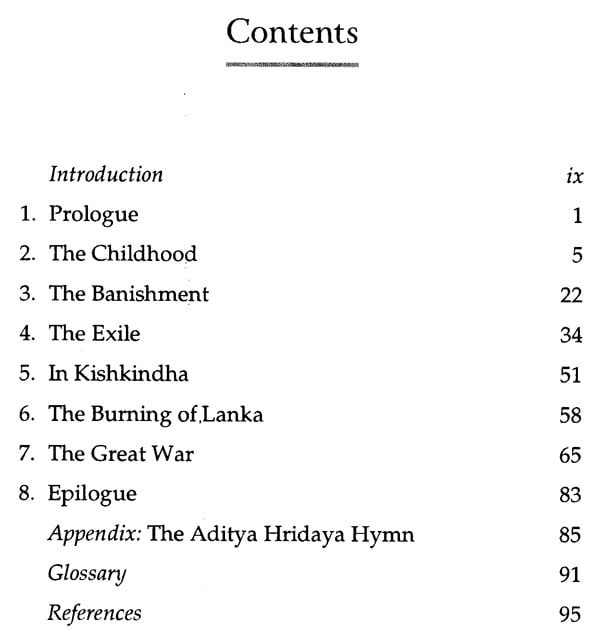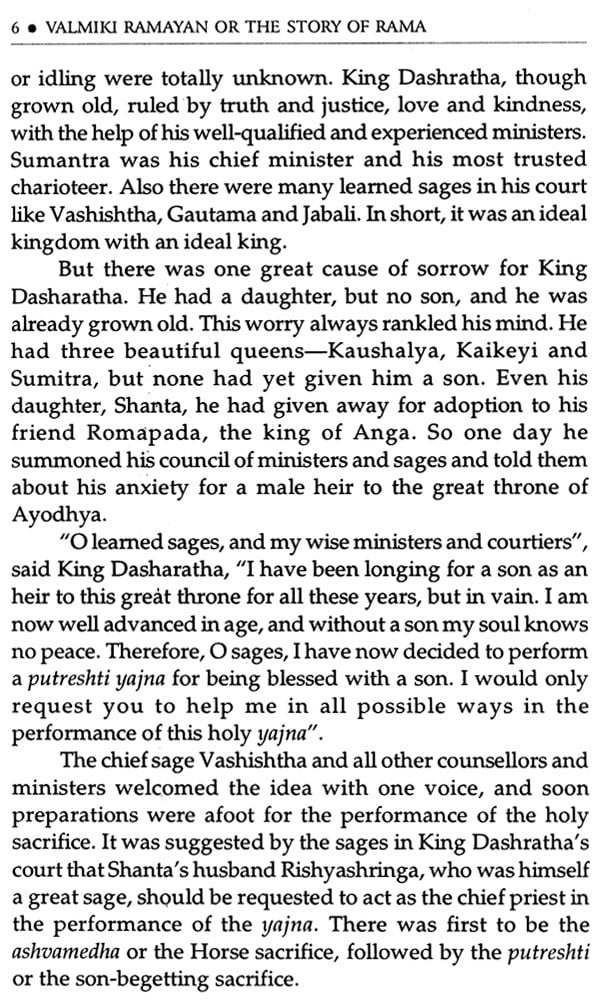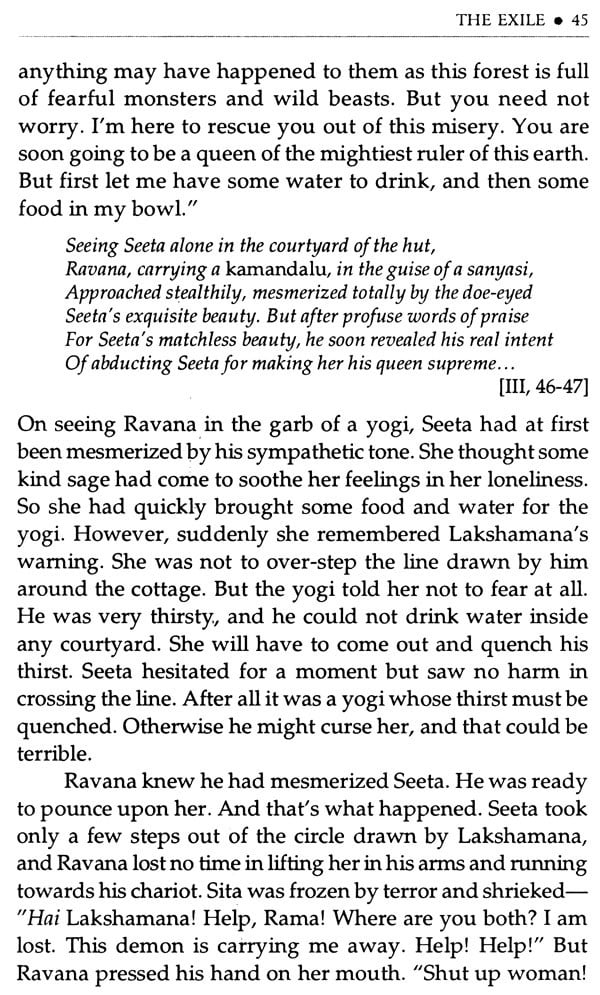
The Story Of Rama Are Creation Based On Valmiki Ramayana
Book Specification
| Item Code: | NBZ955 |
| Author: | BSM Murty |
| Publisher: | Value Publications, Delhi |
| Language: | English |
| Edition: | 2020 |
| ISBN: | 9788194458135 |
| Pages: | 106 (Throughout B/w Illustrations) |
| Cover: | HARDCOVER |
| Other Details | 9.00 X 6.00 inches |
| Weight | 260 gm |
Book Description
The story of Rama has been sung and retold by scores of poets throughout our great country. But none has excelled in recomposing the great epic poem more than the Tamil poet Kambana in the south, and the Hindi poet Tulsidasa in the north.
The same story of Rama is retold here for the modem reader, particularly of the young gene- ration, as sung by these immortal poets of India.
In order to view the content and process of composition of such epics, more or less similar in nature in most ( great epics of the West - like Iliad, Odyssey, Adenoid, etc (representing the ancient Western cultural tradition) must envisage a continuous process of transmission of cultural artifacts across centuries in a society, much 1 river flowing ahead, continually augmented by tribute on its way - a natural process for the composition of an epics that represent a particular cultural ethos. It is a process of the amalgamation of popular folk history and mythology across time, a literary alchemy that creates its own verisimilitude. Also, thereby, it gains a richness and scriptural authenticity which serves as seminal in further literary regeneration. It thus acquires a sanctity that rises beyond rational analysis and argumentation. The reader refrains from the whys or hows about its content, and submits to its own spiritual veracity with a 'willing suspension of disbelief'.
Book's Contents and Sample Pages












